Phenolic and Antioxidant Activity of Moringa-Bean Sprouts Extract as PGRs for Soybeans
DOI:
10.29303/jpm.v20i6.9941Published:
2025-10-02Issue:
Vol. 20 No. 6 (2025)Keywords:
Antioxidant Activity; Bean Sprouts; Moringa Leaves; PGRs; Total PhenolicsArticles
Downloads
How to Cite
Downloads
Metrics
Abstract
The demand for soybeans continues to increase, but local production remains insufficient, requiring strategies to enhance productivity and quality, such as the application of Plant Growth Regulators (PGRs). Natural PGRs derived from moringa leaves and mung bean sprouts, which are rich in auxins and cytokinins, have the potential to accelerate growth and stimulate the production of secondary metabolites. This study investigated various proportions of moringa leaf and mung bean sprout extracts to evaluate their phenolic content, antioxidant activity, and potential as natural PGRs in soybean cultivation. The extracts were analyzed using the Folin–Ciocalteu method for total phenolics and the DPPH assay for antioxidant activity. Among the treatments, Variation E, with a higher proportion of mung bean sprout extract, proved to be the most effective, enhancing both antioxidant activity and phenolic compound production. These findings highlight the novelty of combining moringa leaf and mung bean sprout extracts as a natural PGR strategy, demonstrating promising potential to support soybean growth and improve crop quality.
References
R. Hafni, P. H. RS dan D. Rezeki, “Analisis Permintaan Konsumsi Kedelai di Indonesia,” Seminar Nasional Multidisiplin Ilmu, vol. 3, no. 1, pp. 250-264, 2022.
G. Setyawan dan S. Huda, “Analisis Pengaruh Produksi Kedelai, Konsumsi Kedelai, Pendapatan Per Kapita, dan Kurs Terhadap Impor Kedelai di Indonesia,” Kinerja: Jurnal Ekonomi dan Manajemen, vol. 19, no. 2, pp. 215-225, 2022. https://doi.org/10.30872/jkin.v19i2.10949
F. L. Amriyanti dan P. Sabila, “Aplikasi Sari Daun Kelor Sebagai Zat Pengatur Tumbuh Organik Terhadap Pertumbuhan Dan Kadar Klorofil Tanaman Kedelai (Glycine max (L.) Merr.),” Stigma, vol. 12, no. 2, pp. 82-88, 2019. https://doi.org/10.36456/stigma.12.02.2050.82-88
E. W. Tini, S. Sakhidin, S. Saparso dan T. A. D. Haryanto, “Kandungan Hormon Endogenous pada Tanaman Hortikultura,” Jurnal Galung Tropika, vol. 11, no. 2, pp. 132-142, 2022. https://doi.org/10.31850/jgt.v11i2.955
S. Batool, S. Khan dan S. Basra, “Foliar Application of Moringa Leaf Extract Improves The Growth of Moringa Seedlings in Winter,” South African Journal of Botany, vol. 129, pp. 347-353, 2020. https://doi.org/10.1016/j.sajb.2019.08.040
C. V. Mashamaite, B. L. Ngcobo, A. Manyevere, I. Bertling dan O. A. Fawole, “Assessing the Usefulness of Moringa oleifera Leaf Extract as a Biostimulant to Supplement Synthetic Fertilizers: A Review,” Plants (Basel), vol. 11, no. 17, p. 2214, 2022. https://doi.org/10.3390/plants11172214
R. Nopiyanto dan S. S. T. Pamungkas, “Pengaruh Zat Pengatur Tumbuh Alami Dari Ekstrak Tauge Terhadap Pertumbuhan Pembibitan Budchip Tebu (Saccharum officinarum L.) Varietas Bululawang (BL),” Mediagro, vol. 16, no. 1, pp. 68-80, 2020. https://doi.org/10.31942/mediagro.v16i1.3391
A. Miftakhurrohmat dan M. D. Dewantara, “Application of Phytohormones of Bean Sprouts Extract on Growth of Cayenne Pepper (Capsicum frutescens L.),” Nabatia, vol. 8, no. 2, pp. 45-51, 2020. https://doi.org/0.21070/nabatia.v8i2.1027
S. L. Asmono, N. M. Haqiqi dan A. Salim, “The Effect Of Mung Bean Sprout Extract As a Natural Plant Growth Regulator On The Growth Of Sugarcane Budchip (Saccharum officinarum L.) Seedlings,” Mediagro: Jurnal Ilmu Ilmu Pertanian, vol. 19, no. 1, pp. 118-125, 2023. https://doi.org/10.31942/mediagro.v19i1.8250
M. Warohmah, A. Karyanto dan Rugayah, “Pengaruh Pemberian Dua Jenis Zat Pengatur Tumbuh Alami Terhadap Pertumbuhan Seedling Manggis (Garcinia mangostana L.),” J. Agrotek Tropika, vol. 6, no. 1, pp. 15-20, 2018. https://doi.org/10.23960/jat.v6i1.2527
A. D. S. Puspitasari dan N. A. Habibah, “Pengaruh Zat Pengatur Tumbuh 2,4-D dan Kinetin terhadap Pertumbuhan dan Morfologi Sel Gembili ( Dioscorea esculenta),” Life Science, vol. 10, no. 2, pp. 191-200, 2021. http://dx.doi.org/10.15294/lifesci.v10i2.54460
J. Kurepa, T. E. Shull, S. S. Karunadasa dan J. A. Smalle, “Modulation of Auxin and Cytokinin Responses by Early Steps of The Phenylpropanoid Pathway,” BMC Plant Biology, vol. 18, no. 278, pp. 1-15, 2018. https://doi.org/10.1186/s12870-018-1477-0
A. P. Hasanuddin, Yusran, Islawati dan Artati, “Analisis Kadar Antioksidan Pada Ekstrak Daun Binahong Hijau Anredera Cordifolia (Ten.) Steenis,” Bioma: Jurnal Biologi Makassar, vol. 8, no. 2, pp. 66-74, 2023.
A. K. Ansyori, M. Tamrin dan H. Sa'adah, “Uji Aktivitas Antioksidan Ekstrak Etanol Biji Buah Nyirih (Xylocarpus Granatum) Dengan Metode DPPH Secara Spektrofotometri Uv-Vis,” Jurnal Riset Kefarmasian Indonesia, vol. 6, no. 2, pp. 233-248, 2024. https://doi.org/10.33759/jrki.v6i2.527
S. Srikandi, M. Humaeroh dan R. Sutamihardja, “Kandungan Gingerol dan Shogaol dari Ekstrak Jahe Merah (Zingiber Officinale Roscoe) Dengan Metode Maserasi Bertingkat,” Al-Kimiya, vol. 7, no. 2, pp. 75-81, 2020. https://doi.org/10.15575/ak.v7i2.6545
M. Han, S. Kasim, Z. Yang, X. Deng, N. B. Saidi, M. K. Uddin dan E. M. Shuib, “Plant Extracts as Biostimulant Agents: A Promising Strategy for Managing Environmental Stress in Sustainable Agriculture,” Phyton-International Journal of Experimental Botany, vol. 93, no. 9, pp. 2149-2166, 2024. https://doi.org/10.32604/phyton.2024.054009
S. N. Indriyah dan D. A. I. Permatasari, “Penetapan Kadar Fenolik Serta Uji Aktivitas Antioksidan Ekstrak Dan Fraksi Batang Bajakah Kalalawit (Uncaria Gambir Roxb) Dengan Metode Frap,” Usada Nusantara: Jurnal Kesehatan Tradisional, vol. 1, no. 2, pp. 147-158, 2023. https://doi.org/10.47861/usd.v1i2.347
M. Pérez, I. Dominguez-López dan R. M. Lamuela-Raventós, “The Chemistry Behind the Folin-Ciocalteu Method for the Estimation of (Poly)phenol Content in Food: Total Phenolic Intake in a Mediterranean Dietary Pattern,” J Agric Food Chem, vol. 71, no. 46, pp. 17543-17553, 2023. https://doi.org/10.1021/acs.jafc.3c04022
H. Wang, J. Chen, R. Guo, D. Wang, T. Wang dan Y. Sun, “Exogenous brassinolide treatment regulates phenolic accumulation in mung bean sprouts through the modulation of sugar and energy metabolism,” J Sci Food Agric, vol. 104, no. 3, pp. 1656-1667, 2024. https://doi.org/10.1002/jsfa.13060
N. Rashid, A. Wahid, D. Ibrar, S. Irshad, Z. Hasnain, A. Al-Hashimi, M. S. Elshikh, S.-E. Jacobsen dan S. Khan, “Application of natural and synthetic growth promoters improves the productivity and quality of quinoa crop through enhanced photosynthetic and antioxidant activities,” Plant Physiol Biochem, vol. 182, pp. 1-10, 2022. https://doi.org/10.1016/j.plaphy.2022.04.012
T. Chikmawati, Sobir, Sulitijorini dan Gunawan, “Review: Fitokimia genus Baccaurea spp.,” Bioeksperimen, vol. 2, no. 2, pp. 96-110, 2016. https://doi.org/10.23917/bioeksperimen.v2i2.2488
Y. U. Anggraito, R. Susanti, R. S. Iswari, A. Yuniastuti, Lisdiana, N. WH, N. A. Habibah, S. H. Bintari dan M. Dafip, Metabolit Sekunder Dari Tanaman: Aplikasi dan Produksi, Semarang: Fakultas Matematika dan Ilmu Pengetahuan Alam Universitas Negeri Semarang, 2018.
S. Irshad, A. Matloob, K. Mehmood, M. Nawaz, S. Iqbal, M. A. Wahid, R. M. Ikram, M. A. Ghafoor, M. H. Siddiqui, S. Alamri dan S. Khan, “Moringa dried leaf extract as bio-foliar fertilizer for revitalizing performance and nutritional status of soybean,” Sci Rep, vol. 15, no. 1, p. 20431, 2025. https://doi.org/10.1038/s41598-025-95404-0
K. Kumar, P. Debnath, S. Singh dan N. Kumar, “An Overview of Plant Phenolics and Their Involvement in Abiotic Stress Tolerance,” Stresses, vol. 3, no. 3, pp. 570-585, 2023. https://doi.org/10.3390/stresses3030040
N. Arista dan R. M. Siregar, “Uji Aktivitas Antioksidan Ekstrak Kulit Pisang Barangan (Musa Acuminata Linn) Dengan Metode DPPH,” Nautical: Jurnal Ilmiah Multidisiplin, vol. 1, no. 12, pp. 1477-1484, 2023. https://doi.org/10.55904/nautical.v2i12.632
M. H. Ibroham, S. Jamilatun dan I. D. Kumalasari, “A Review: Potensi Tumbuhan-Tumbuhan di Indonesia Sebagai Antioksidan Alami,” Prosiding Semnaslit LPPM UMJ, vol. 1, no. 1, pp. 1-13, 2022.
E. Ramadhani, T. Setyorini dan A. Himawan, “Induksi Kalus Eksplan Daun Lada (Piper nigrum. L) pada Modifikasi Media MS dengan Penambahan Hormon Sintetik dan Alami,” Agroforetech, vol. 1, no. 2, pp. 998-1006, 2023.
F. D. Wafa, M. Ubaidillah dan T. A. Siswoyo, “Respon Pemberian Giberelin Terhadap Kandungan Fenolik dan Aktivitas Antioksidan Pada Buah Tanaman Ciplukan (Physalis angulata L.),” Jurnal Agroteknologi, vol. 15, no. 2, pp. 114-126, 2021. https://doi.org/10.19184/j-agt.v15i02.25391
A. Mushtofa, “Pengaruh Kombinasi 2,4 D (2,4 Dichloropenoxyacetic acid) dan Kinetin Terhadap Induksi Kalus Nilam Aceh varietas Sidikalang (Pogostemon cablin Benth.) Melalui teknik In Vitro,” Universitas Islam Negeri Maulana Malik Ibrahim, Malang, 2018.
O. P. Sutanto dan N. Farida, “Analisis Korelasi Komponen Tumbuh dengan Kadar Flavonoid Ekinase (Echinacea purpurea),” Jurnal Citra Widya Edukasi, vol. 16, no. 3, pp. 217-226, 2024.
L. Cao, S. Zhang, L. Feng, B. Qiang, W. Ma, S. Cao, Z. Gong dan Z. Gong, “Metabolic pathways regulated by strigolactones foliar spraying enhance osmoregulation and antioxidant defense in drought-prone soybean,” BMC Plant Biol, vol. 24, no. 980, pp. 1-17, 2024. https://doi.org/10.1186/s12870-024-05663-8
Author Biographies
Putri Nur Itsnaini, Department of Chemistry, Faculty of Mathematics and Natural Science, Universitas Negeri Surabaya
Mirwa Adiprahara Anggarani, Department of Chemistry, Faculty of Mathematics and Natural Science, Universitas Negeri Surabaya
License
Copyright (c) 2025 Putri Nur Itsnaini, Mirwa Adiprahara Anggarani

This work is licensed under a Creative Commons Attribution 4.0 International License.
The following terms apply to authors who publish in this journal:
1. Authors retain copyright and grant the journal first publication rights, with the work simultaneously licensed under a Creative Commons Attribution License 4.0 International License (CC-BY License) that allows others to share the work with an acknowledgment of the work's authorship and first publication in this journal.
2. Authors may enter into separate, additional contractual arrangements for the non-exclusive distribution of the journal's published version of the work (e.g., posting it to an institutional repository or publishing it in a book), acknowledging its initial publication in this journal.
3. Before and during the submission process, authors are permitted and encouraged to post their work online (e.g., in institutional repositories or on their website), as this can lead to productive exchanges as well as earlier and greater citation of published work (See The Effect of Open Access).











